
In the world of technology, the process of evaluating a candidate’s skills in the field of testing plays a vital role in ensuring the success of any development cycle. These assessments are designed to gauge a person’s proficiency in identifying errors, ensuring functionality, and optimizing processes. To succeed, it is crucial to understand the range of topics that are commonly covered and the specific strategies that help tackle complex scenarios effectively.
Preparation for these assessments requires a solid grasp of testing concepts, methodologies, and tools. Understanding how to approach various challenges, interpret case studies, and apply different techniques is key to performing well. The right preparation involves not only theoretical knowledge but also practical insights into real-world applications.
By familiarizing oneself with the most frequently addressed topics, candidates can feel more confident and equipped to demonstrate their skills under pressure. Knowing what to expect helps reduce anxiety and fosters a more focused approach to problem-solving.
Essential Topics for QA Exam Preparation
Preparing for testing assessments requires an understanding of several key areas that will be covered throughout the evaluation process. Mastery of these topics ensures you are well-equipped to tackle a wide range of challenges. Below are the essential areas you should focus on to succeed in these assessments.
- Testing Types – Understand the different testing methods such as functional, non-functional, regression, and acceptance testing. Each method has its own purpose and application in the testing lifecycle.
- Test Case Design – Learn how to create effective test cases, focusing on proper structuring, expected outcomes, and edge case considerations.
- Bug Life Cycle – Be familiar with the stages through which a defect passes, from identification to resolution, and the role testers play in this process.
- Testing Tools – Gain knowledge of various automation tools, bug tracking systems, and other software that are commonly used in the testing process.
- Test Plan Development – Develop skills to write detailed test plans that outline objectives, scope, resources, and schedules for any given project.
- Performance Testing – Know the techniques for evaluating how applications perform under stress, including load and stress testing scenarios.
- Test Documentation – Be able to create clear and concise test documentation that captures results, issues, and necessary actions.
- Risk Management – Understand how to identify, analyze, and mitigate risks throughout the testing process to ensure a smooth project flow.
By focusing on these fundamental areas, you can build a comprehensive knowledge base and be ready to handle both theoretical and practical challenges with confidence. Each of these topics plays a crucial role in ensuring thorough preparation for any evaluation in the field of testing.
Understanding Testing Fundamentals
At the core of any evaluation in the field of technology lies a solid understanding of fundamental principles. These core concepts are essential for identifying errors, ensuring functionality, and maintaining high performance throughout the development cycle. Whether you are testing an application or a system, knowing the foundational elements helps in approaching complex tasks with clarity and precision.
The first step is grasping the different types of assessments used to validate a product’s functionality, performance, and security. Each type serves a distinct purpose and requires specific techniques for execution. Additionally, it’s important to understand the process of identifying defects and their impact on the final output. This knowledge is critical in producing reliable results and ensuring the end product meets its objectives.
Another key component is recognizing the significance of systematic planning and preparation. Building test scenarios and cases, designing structured workflows, and documenting findings all contribute to an organized approach to testing. Mastery of these basics ensures more efficient testing cycles and fewer overlooked issues.
Common Types of QA Questions
When preparing for an assessment in the field of testing, it’s important to familiarize yourself with the types of topics that commonly arise. These topics span various aspects of the testing process, from theoretical concepts to practical scenarios. Understanding these areas ensures you can respond confidently to any challenge that may come your way.
Conceptual Questions
These focus on the core principles and methodologies used in testing. Questions of this type often cover foundational knowledge such as the difference between manual and automated methods, key testing phases, or the role of documentation. For example, you might be asked to explain the difference between regression and unit testing or describe the various stages of the defect life cycle.
Practical Scenarios
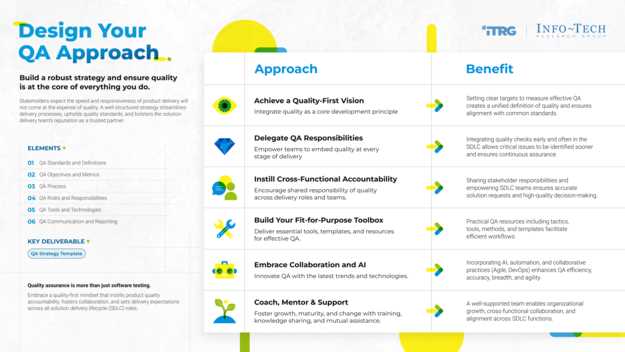
In this category, you may be presented with real-world problems or case studies. The goal is to assess how well you can apply testing strategies to address challenges in a simulated environment. These could include tasks like designing test cases based on given requirements or troubleshooting issues related to system performance or security. Being able to provide detailed solutions and reasoning behind your decisions is crucial.
By preparing for both conceptual and practical challenges, you can demonstrate a comprehensive understanding of the field and showcase your problem-solving abilities under real-world conditions.
Key Concepts in Quality Testing
Understanding the core principles of testing is fundamental for achieving successful outcomes. These concepts provide a structured approach to ensuring that products function as intended, remain reliable, and meet the required standards. Mastery of these essential ideas helps testers perform efficiently and deliver high-quality results, no matter the context or complexity of the project.
Fundamental Testing Types
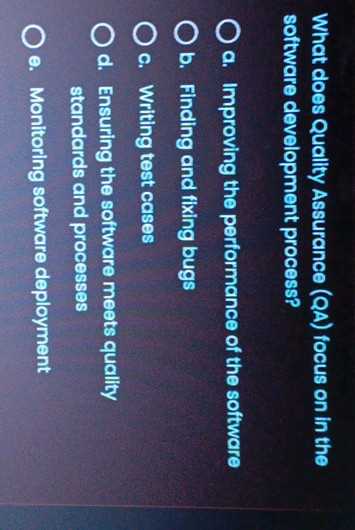
Different types of testing serve unique purposes in the overall development process. These methodologies help identify specific issues, validate functionality, and ensure performance under different conditions. Below is a table summarizing the most commonly used approaches:
| Testing Type | Purpose | Key Focus |
|---|---|---|
| Functional Testing | Validates the intended functions | Ensures each feature works according to specifications |
| Performance Testing | Assesses the system’s performance under stress | Evaluates speed, responsiveness, and stability |
| Security Testing | Ensures the system is secure | Focuses on potential vulnerabilities |
| Regression Testing | Checks if new changes affect existing features | Identifies any unintended consequences after updates |
Test Case Design
Creating well-structured test cases is a critical aspect of the testing process. This involves designing scenarios that cover a variety of conditions to ensure comprehensive validation of the product. Each test case should have clear steps, expected results, and criteria for success. Effective test case design reduces the risk of overlooking critical aspects during the assessment process.
Frequently Asked Questions in QA Exams
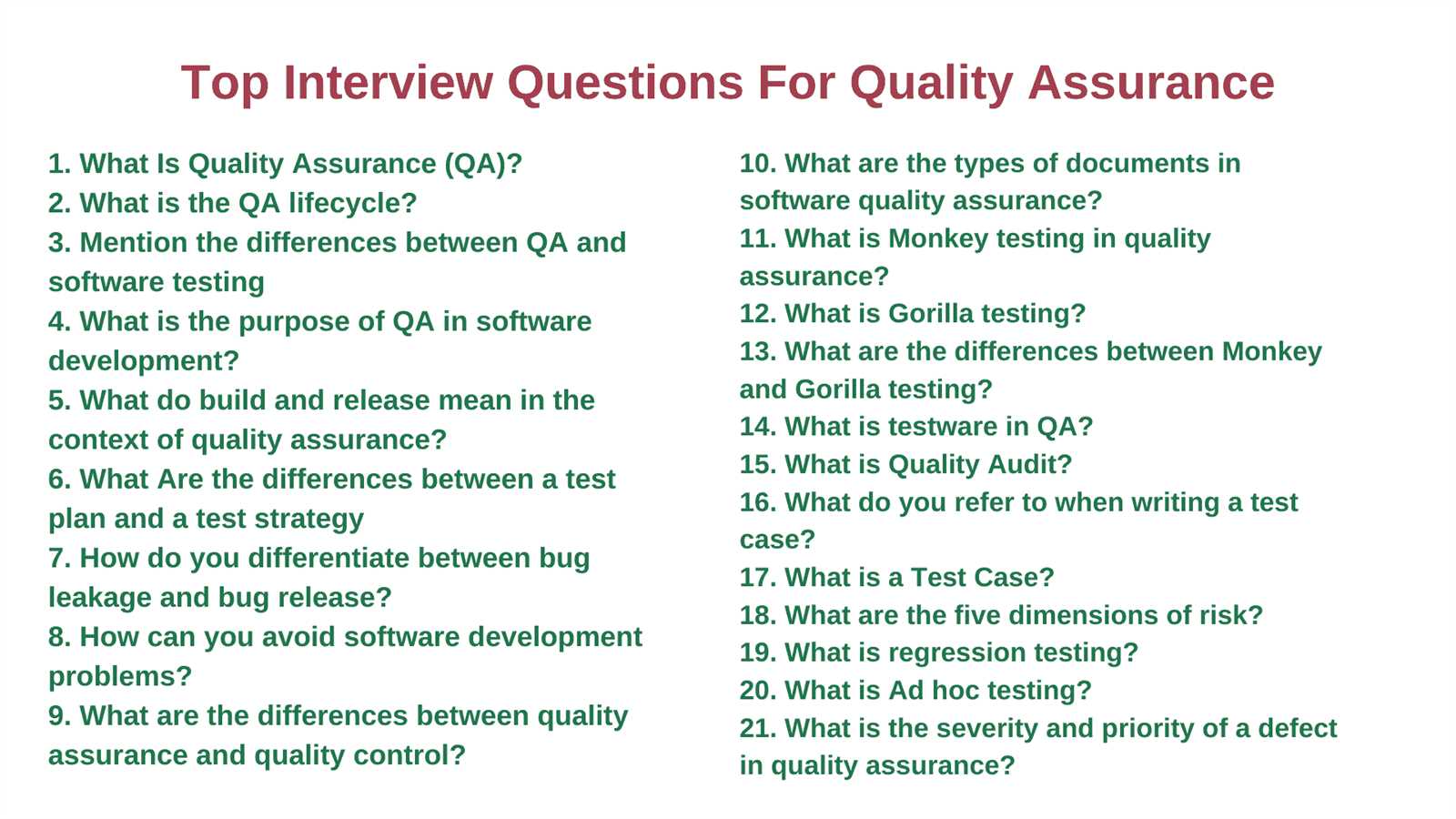
During any assessment in the field of testing, certain topics tend to come up more frequently. These areas are considered essential for understanding the key principles of the discipline and are commonly included in most evaluations. By being familiar with these recurring themes, you can ensure that you’re prepared to handle a wide range of topics with confidence.
Below are some of the most common topics that test-takers encounter, along with a brief explanation of what each area typically covers:
- What are the different types of testing?
This question assesses knowledge of various testing methods, such as functional, regression, integration, and performance testing, along with their specific applications.
- Explain the process of defect tracking and management.
Here, the focus is on understanding how defects are identified, documented, tracked, and resolved throughout the development process.
- How do you design a test case?
This question tests your ability to create well-structured test cases, outlining the steps, expected results, and criteria for success.
- What is the difference between manual and automated testing?
Test-takers must be able to explain the advantages and challenges of both approaches and when each method is most suitable.
- What is regression testing, and why is it important?
In this case, you should demonstrate understanding of how regression testing ensures that new updates do not negatively impact existing functionality.
Being prepared for these frequently asked topics will give you an edge in any testing evaluation. Make sure to review these areas thoroughly, as they are key to demonstrating your competency in the field.
Test Case Design and Evaluation
Creating effective test cases is a fundamental part of the validation process. Well-designed cases ensure comprehensive coverage of the system’s functionality and allow for the identification of potential issues early on. A carefully crafted test case helps ensure that each feature operates as intended and that the product meets the desired requirements. This section focuses on the best practices for designing and evaluating test cases to maximize their effectiveness.
Designing Test Cases
When designing test cases, the objective is to create clear, concise, and effective steps that validate specific functionality. The process involves several key considerations to ensure the test case is useful and comprehensive:
- Objective – Define the purpose of the test case clearly. What functionality or behavior is being verified?
- Inputs – Specify the inputs or conditions required to execute the test. These could include data values, configurations, or environment setups.
- Expected Results – Clearly outline what the expected outcome should be if the system behaves correctly. This provides a basis for comparison.
- Preconditions – Identify any conditions that must be met before the test can be executed, such as system state or user permissions.
- Postconditions – Define the state of the system after the test has been executed, including any changes that should have occurred.
Evaluating Test Cases
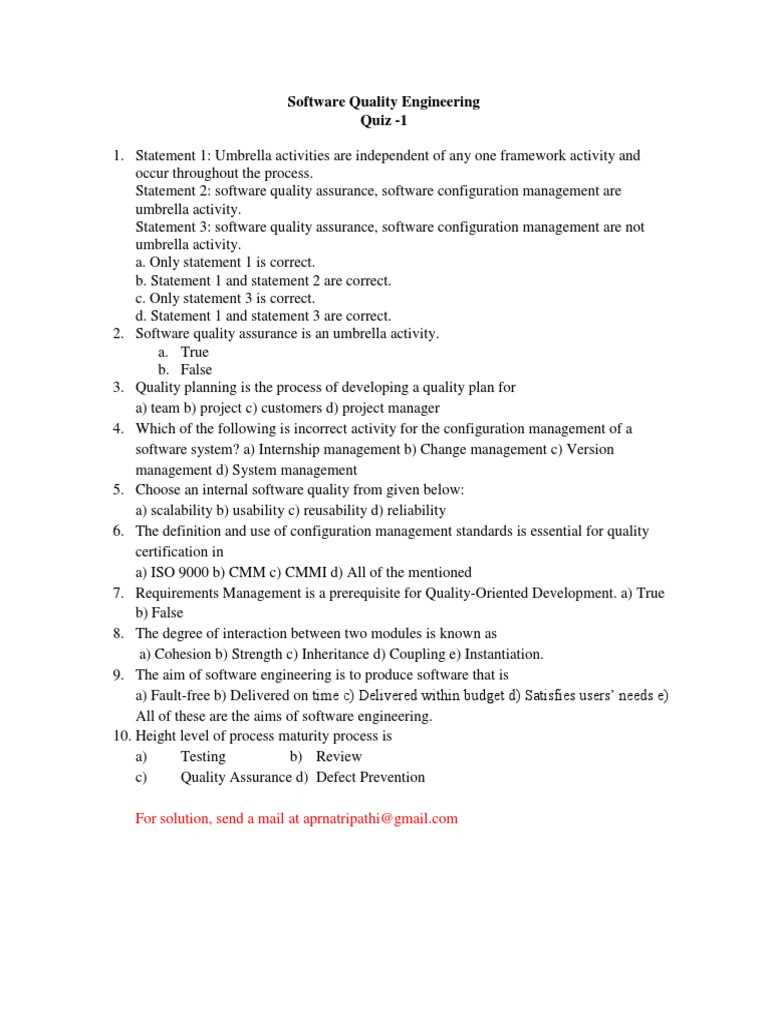
Once test cases are designed, it’s crucial to evaluate them to ensure their effectiveness. This involves reviewing their coverage, clarity, and ability to identify defects under various scenarios:
- Coverage – Ensure that all important functionalities are tested, including edge cases, positive and negative paths, and alternative workflows.
- Clarity – Test cases should be easy to follow, with detailed steps and clear expectations for results. Ambiguity can lead to errors in execution.
- Reusability – Evaluate whether the test case can be reused in different contexts, such as during regression testing or in similar projects.
- Efficiency – Ensure that the test case does not involve unnecessary steps or redundant actions, and that it effectively tests the functionality within a reasonable time frame.
By following these best practices for both design and evaluation, testers can create cases that not only verify functionality but also contribute to the overall reliability and quality of the product.
Effective Test Strategies for Success
In the realm of validation, developing a successful strategy is critical to achieving thorough coverage and uncovering defects. A strong testing approach allows teams to prioritize key areas, streamline the process, and ultimately deliver a reliable product. The right strategies help ensure that testing is not only comprehensive but also efficient and aligned with the project’s goals.
Prioritizing Key Areas
Focusing on the most crucial aspects of the system ensures that the testing process remains efficient. Not every part of the system is equally important, and prioritizing test activities based on risk, complexity, and usage can help maximize impact:
- Risk-based Testing – Focus on high-risk areas that have the potential to affect critical system functionality.
- Critical Path Testing – Identify key workflows or processes that, if broken, would significantly impact the user experience or system operations.
- Complexity Testing – Prioritize areas with complex logic or interactions, where defects are more likely to occur.
- Most Frequently Used Features – Target features that are used the most by end-users to ensure they function correctly in all scenarios.
Automation and Manual Testing Balance
Striking the right balance between manual and automated testing is crucial for efficiency. While automation is great for repetitive tasks, manual testing excels in areas that require human judgment or where automation would be too costly or complex. A well-rounded strategy combines both approaches:
- Automate Repetitive Tests – Automation is ideal for tests that need to be run frequently, such as regression tests or smoke tests.
- Manual Testing for Exploratory Scenarios – Use manual testing for areas that involve creativity or require intuitive problem-solving, such as user interface evaluation.
- Continuous Integration Testing – Automate integration tests to ensure that new changes integrate smoothly with existing functionality.
By implementing a balanced approach and focusing on key areas, teams can optimize their testing efforts, reduce the likelihood of defects, and ensure that the final product meets all desired requirements.
How to Answer Behavioral QA Questions
In any interview or assessment process, you will often encounter questions that focus on how you approach tasks, handle challenges, and interact with colleagues. These types of inquiries aim to understand your problem-solving skills, your ability to work under pressure, and how you handle difficult situations. Effectively responding to these questions can demonstrate your experience, thought processes, and suitability for a testing role.
Here are some strategies for crafting strong responses to behavioral questions, highlighting your strengths and practical experience:
Use the STAR Technique
The STAR method (Situation, Task, Action, Result) is a structured approach that helps you organize your thoughts and provide clear, concise answers. By following this format, you can ensure that you cover all aspects of the scenario in a way that highlights your role and contributions:
- Situation: Describe the context or background of the situation you were facing. This sets the stage for the story.
- Task: Explain the goal or challenge that you were tasked with solving. What was expected of you?
- Action: Focus on the specific steps you took to address the problem. This is where you showcase your skills and thought process.
- Result: Share the outcome of your actions. Was the problem resolved? What was the impact of your efforts?
Highlight Problem-Solving Skills
Behavioral questions often revolve around problem-solving scenarios, especially when handling defects, tight deadlines, or conflicting priorities. Demonstrating how you effectively troubleshoot, prioritize, and collaborate with others can set you apart. Consider these examples:
- Describe a time when you identified a critical issue at the last minute. How did you manage to address it?
Focus on the steps you took to resolve the problem and how you worked with your team to fix the issue quickly. - Tell us about a challenging project where you had to ensure minimal disruption to the user experience. What approach did you take?
Emphasize your ability to test under pressure while maintaining quality and reliability.
By using the STAR method and focusing on real-life examples of problem-solving, you can effectively communicate your skills and experiences in a way that makes a strong impression.
Tools and Techniques for QA Professionals
In the realm of validation, professionals rely on a variety of tools and methods to ensure that systems perform as intended and meet the necessary standards. These tools streamline testing, improve accuracy, and help teams execute tests efficiently. Understanding the right techniques and selecting appropriate tools is crucial to enhancing productivity and delivering reliable results.
From automated scripts to manual testing frameworks, the following tools and techniques are commonly employed by testing professionals:
| Tool/Technique | Purpose | Key Benefits |
|---|---|---|
| Test Automation Tools | Automates repetitive tasks such as regression or smoke tests. | Increases efficiency, reduces human error, and ensures repeatability. |
| Bug Tracking Systems | Tracks and manages defects or issues found during testing. | Helps teams prioritize fixes, track progress, and maintain communication. |
| Performance Testing Tools | Simulates various levels of load to test system performance under stress. | Helps identify bottlenecks and optimize scalability. |
| Continuous Integration Systems | Automatically integrates code changes and runs tests on each build. | Ensures consistent testing, quicker feedback loops, and faster bug identification. |
| Manual Testing Frameworks | Used for exploratory and usability testing where automation is impractical. | Provides human judgment, creativity, and user experience insight. |
| Test Management Tools | Helps in planning, tracking, and organizing testing activities and results. | Facilitates team collaboration and helps track test coverage and progress. |
Choosing the right combination of tools and techniques is essential to building a robust testing process. By leveraging both automated solutions and manual expertise, professionals can effectively cover all critical areas of system validation and ensure the final product is robust, reliable, and ready for deployment.
Important Metrics in Software Testing
In any validation process, understanding the key indicators of performance and effectiveness is crucial for assessing progress, identifying potential risks, and making informed decisions. These metrics offer insight into how well testing activities are aligning with goals, whether defects are being resolved efficiently, and how prepared the system is for release. By focusing on these measurements, teams can ensure that their efforts are impactful and that any potential issues are addressed proactively.
The following metrics are vital for tracking testing progress and evaluating the overall success of testing efforts:
- Test Coverage: Measures the extent to which the testing process has covered the required areas of the system. High coverage ensures that all aspects have been evaluated, reducing the likelihood of missed defects.
- Defect Density: Represents the number of defects found per unit of code or functionality. It is useful for evaluating the stability of the system and understanding areas that may need more attention.
- Test Execution Progress: Tracks the number of tests executed versus the number planned. This helps teams stay on schedule and ensures that testing is progressing as expected.
- Defect Resolution Time: Measures the time taken to identify, analyze, and fix defects. It highlights the efficiency of the defect management process and can pinpoint bottlenecks.
- Pass/Fail Rate: Indicates the percentage of tests that passed versus those that failed. A high pass rate suggests that the system is stable, while a high failure rate might require further investigation.
- Test Case Effectiveness: Measures how many failed tests resulted in the discovery of critical issues. This metric helps determine the overall effectiveness of the test cases being used.
- Reopened Defects: Tracks the number of defects that were considered resolved but were later reopened. A high number may indicate that fixes were insufficient or the testing process lacked thoroughness.
By carefully monitoring these metrics, teams can make adjustments to their approach, optimize resource allocation, and ultimately improve the efficiency and effectiveness of the entire testing process. Understanding these key indicators enables testers to identify areas of improvement, allocate attention to critical issues, and ensure the success of the validation effort.
QA Best Practices for Exam Success
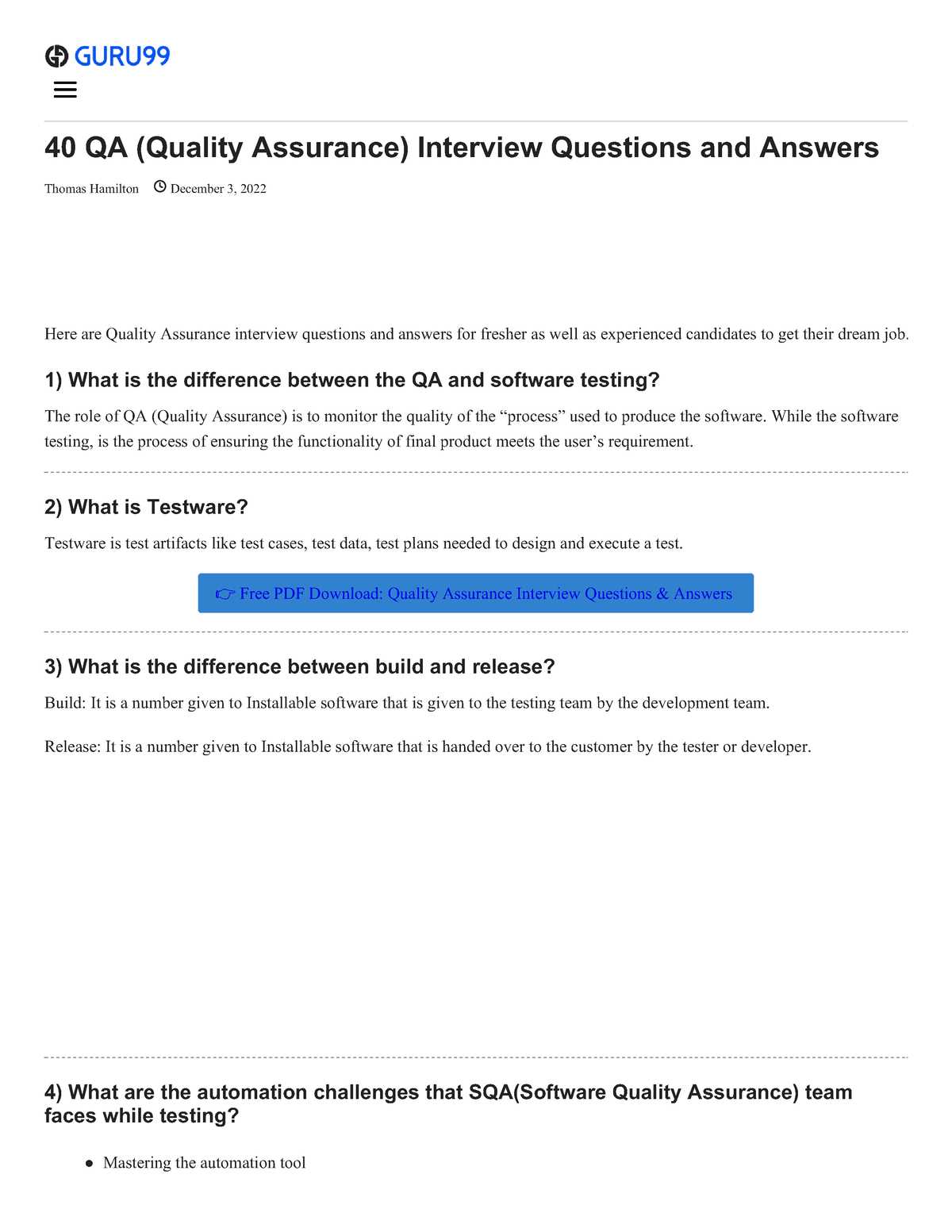
Achieving success in assessments related to validation processes requires a combination of preparation strategies, in-depth understanding of core concepts, and the ability to apply practical knowledge efficiently. By following proven practices, individuals can improve their performance and approach challenges with confidence. The following guidelines highlight key techniques for maximizing success when preparing for such assessments.
1. Build Strong Foundation Knowledge
Understanding the fundamental principles of validation is essential. This includes knowing various testing methods, lifecycle stages, defect management, and industry best practices. Focus on gaining a deep comprehension of core topics, as this will enable you to solve problems effectively under pressure.
2. Practice with Sample Scenarios
Engage in mock tests and simulated problem-solving scenarios. By applying your knowledge to real-world examples, you can improve critical thinking skills and become accustomed to how questions may be framed. Practicing with diverse examples will also help identify areas that need further attention.
3. Manage Your Time Effectively
Proper time management is crucial when tackling assessment tasks. Allocate sufficient time for each section, ensuring that you can complete all tasks. Avoid spending too much time on a single question, and move on if necessary to ensure that you address every item within the allotted timeframe.
4. Focus on Key Areas of Testing
Prioritize topics that are commonly emphasized in assessments. Areas like test planning, defect tracking, performance testing, and test case design are typically essential components. Ensure you are familiar with key tools and techniques associated with these areas.
5. Revise with Study Groups or Forums
Collaborating with peers or seeking advice in online forums can provide additional insights and help reinforce your understanding. Discussing challenging concepts with others can offer fresh perspectives, uncover new tips, and expose areas that you might have missed during independent study.
6. Stay Updated with Industry Trends
Validation processes and tools are continuously evolving. Keeping up with the latest trends, emerging technologies, and updated practices ensures that you have the most current knowledge. This not only helps during assessments but also prepares you for real-world challenges in the field.
7. Stay Calm and Confident
Confidence and a calm demeanor can make a significant difference when handling complex tasks. Trust in your preparation, stay focused on the task at hand, and avoid getting stressed. A positive mindset allows you to think clearly and solve problems more effectively.
By adopting these practices, you will be better equipped to tackle any challenges that arise during the assessment process, boosting both your preparedness and performance.
Understanding Different Testing Methodologies
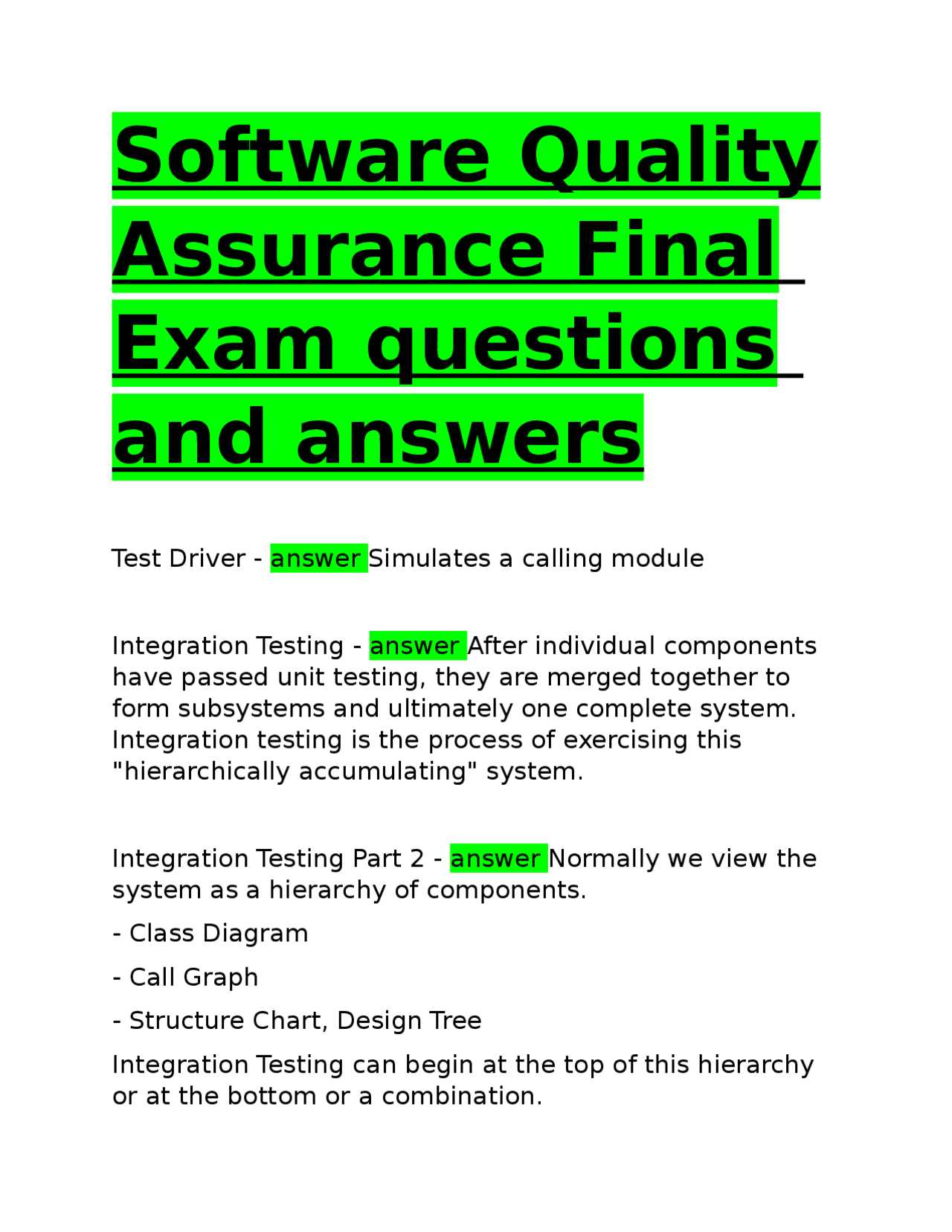
In the realm of product validation, choosing the right approach is crucial to identifying defects, ensuring performance, and delivering a reliable system. Different methodologies cater to various needs, helping teams to prioritize certain aspects of the process, such as efficiency, reliability, or user experience. Understanding these methodologies and their applications ensures that testers can make informed decisions based on the specific requirements of a given project.
1. Manual Testing
Manual validation involves testers manually executing test cases without the aid of automation tools. This approach is often used when the scope of testing is small or when human intuition is needed to understand the behavior of a system. It allows for exploratory testing and is often favored when dealing with complex user interfaces or intricate workflows. However, it can be time-consuming and less efficient for large-scale projects.
2. Automated Testing
Automated validation involves using software tools to execute predefined test cases. This method is more efficient for repetitive testing, particularly in large projects where tests need to be run frequently. Automated tests can quickly verify whether the system functions as expected and are crucial in regression testing, saving time and ensuring consistency. However, it requires an upfront investment in scripting and maintaining automation tools.
3. Agile Testing
Agile testing is integrated into the iterative development cycle, focusing on rapid feedback and continuous improvement. It emphasizes collaboration between developers and testers, ensuring that testing activities are performed in parallel with development. This methodology supports flexible and adaptive testing, making it ideal for projects with evolving requirements and tight deadlines.
4. Performance Testing

Performance validation measures how well a system performs under various conditions. This methodology focuses on ensuring that the product can handle expected load, speed, and scalability requirements. Types of performance testing include load testing, stress testing, and scalability testing, each designed to evaluate specific aspects of system performance.
5. Security Testing
Security validation ensures that a system is protected against unauthorized access, data breaches, and other vulnerabilities. This methodology evaluates the system’s resistance to external threats and its ability to handle sensitive information securely. It is a critical aspect for products dealing with personal or financial data and is often performed through vulnerability scanning, penetration testing, and other security audits.
6. Usability Testing
Usability testing focuses on evaluating the user experience and ensuring that the system is intuitive, accessible, and easy to use. Testers evaluate the system’s design, navigation, and interaction patterns by observing real users. This methodology helps identify potential user interface issues and improve the product’s overall user satisfaction.
By understanding and implementing these methodologies, testing professionals can adapt to the specific needs of each project, ensuring effective validation processes that enhance product quality, user experience, and performance.
Handling Time Pressure in QA Exams
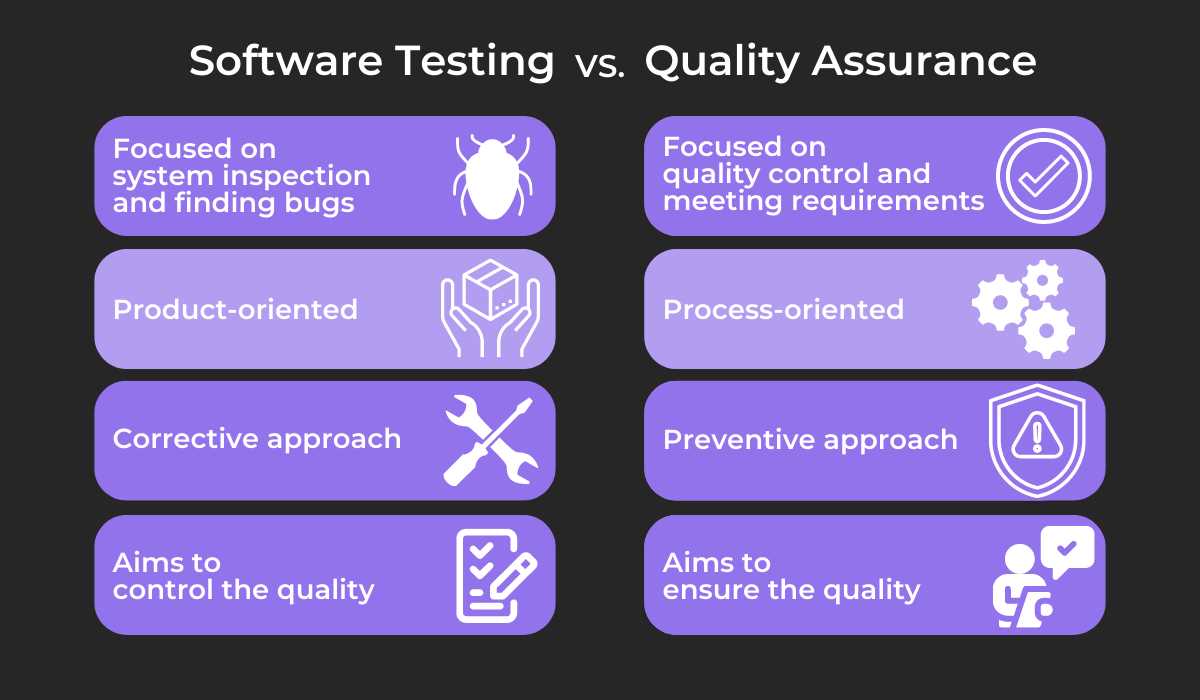
When facing tight deadlines and time constraints, staying focused and organized becomes essential. Testers must balance speed with accuracy to ensure all aspects of validation are covered. Effective time management not only helps complete tasks efficiently but also minimizes errors caused by hasty decisions. By adopting the right strategies, candidates can perform optimally even under time pressure.
1. Prioritize and Plan
One of the best strategies for handling time constraints is to break down tasks into smaller, manageable parts. Identify the most important sections and start with those. Creating a simple outline or checklist can help you stay on track and ensure that no essential task is overlooked. By tackling complex areas first, you reduce the stress of rushing through them at the end.
2. Practice Time Management
Regular practice under timed conditions can help you improve your speed without sacrificing quality. Set a timer and try to complete practice exercises or previous assessments within the allocated time. This simulates the pressure of real situations and helps build confidence. As you practice more, you’ll become more efficient and familiar with common patterns and challenges, making it easier to handle time constraints.
By applying these techniques, candidates can develop the discipline needed to stay focused, work efficiently, and avoid rushing through critical tasks during a stressful assessment period.
Testing Automation and Its Relevance
Automated testing has become a vital component of modern validation processes. It offers significant advantages in terms of efficiency, consistency, and scalability. By utilizing tools that can run pre-written scripts, the testing process can be completed faster and more accurately, reducing the burden on human testers. The ability to run tests repeatedly without manual intervention makes automation a valuable asset, especially for repetitive and time-consuming tasks.
1. Benefits of Automation
Automated testing brings several key advantages to the testing lifecycle. These include:
- Speed – Automated scripts can execute tests much faster than manual testing, allowing for quicker feedback.
- Reusability – Once developed, automated tests can be reused across different stages of the project or for future versions.
- Consistency – Automation eliminates the risk of human error, ensuring that tests are run the same way every time.
- Scalability – As projects grow, automated tests can handle an increasing number of test cases without additional resource strain.
2. Tools for Test Automation
Various tools are available to support automation in validation efforts. Some of the most widely used include:
| Tool | Usage |
|---|---|
| Selenium | Widely used for automating web application testing across different browsers. |
| JUnit | Commonly used for unit testing in Java applications. |
| TestComplete | Provides a user-friendly interface for creating automated tests for various platforms. |
| QTP (QuickTest Professional) | Automation tool primarily for functional testing of applications. |
By adopting automation techniques, organizations can ensure faster delivery of high-quality products while minimizing manual testing efforts.
Preparation Tips for Quality Assessments
Effective preparation for validation assessments involves a comprehensive approach that not only focuses on theoretical knowledge but also practical application. Understanding the core principles, techniques, and tools is essential for success. Proper planning, reviewing key concepts, and practicing with real-world scenarios can significantly boost confidence and performance during the evaluation process.
1. Master the Fundamentals
Begin by solidifying your understanding of the fundamental concepts that are commonly assessed. These include:
- Test life cycle: Know the stages from planning to execution and reporting.
- Common methodologies: Be familiar with various testing approaches, such as manual, automated, functional, and performance testing.
- Tools: Gain hands-on experience with popular testing tools and frameworks used in the industry.
2. Practice with Mock Scenarios
Simulate real-world situations to test your knowledge and speed. Practicing with sample exercises or mock challenges can help you improve problem-solving skills. Focus on:
- Time management: Work on completing tasks within a set time limit to improve efficiency.
- Identifying key details: Sharpen your ability to spot important elements in a given scenario.
- Providing structured responses: Practice organizing your thoughts clearly and systematically.
Consistent practice and reviewing your performance after each mock session will help refine your approach and ensure readiness for the assessment.
Mistakes to Avoid in QA Interviews
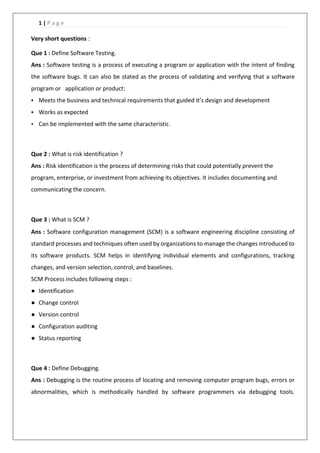
In the competitive world of testing roles, it’s essential to present yourself well during interviews. Common pitfalls can undermine your chances of success. Being aware of these mistakes and actively avoiding them will help you make a positive impression. Focus on demonstrating your technical abilities, problem-solving skills, and understanding of industry best practices.
1. Inadequate Preparation
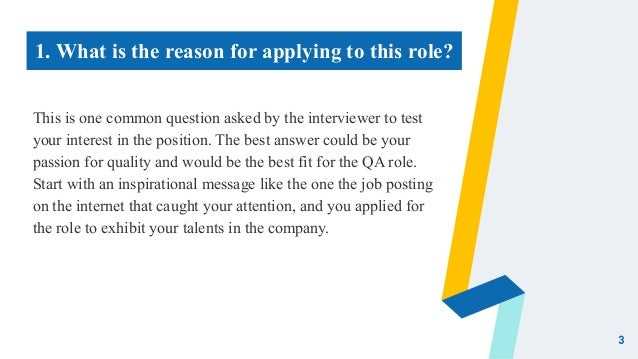
One of the most common mistakes is not preparing enough for the interview. Lack of preparation can lead to poor responses, leaving the interviewer with doubts about your abilities. To avoid this:
- Research the company and its testing methodologies.
- Review key concepts and tools relevant to the role.
- Prepare examples that demonstrate your practical experience.
2. Failing to Showcase Problem-Solving Skills
Interviews often involve situational challenges to test your analytical and troubleshooting abilities. Not addressing these challenges effectively can hurt your chances. Make sure to:
- Clearly explain your thought process when tackling problems.
- Use real examples to illustrate how you’ve solved similar issues in the past.
- Stay calm under pressure and approach problems systematically.
3. Overlooking Soft Skills
While technical knowledge is crucial, soft skills such as communication, teamwork, and adaptability are equally important. Avoid neglecting these aspects by:
- Showcasing your ability to work in teams and collaborate.
- Demonstrating effective communication skills when explaining technical concepts.
- Expressing your willingness to learn and adapt to new challenges.
4. Giving Generic Responses
Interviewers are looking for candidates who can provide specific, detailed examples of their work and experiences. Avoid vague answers that don’t demonstrate your true skills. To stand out:
- Provide clear, specific examples that highlight your achievements and problem-solving abilities.
- Link your experiences to the job requirements and the company’s needs.
Avoiding these common mistakes will allow you to present yourself as a well-rounded, skilled, and prepared candidate ready for any testing role.
Advanced QA Topics for Experienced Testers
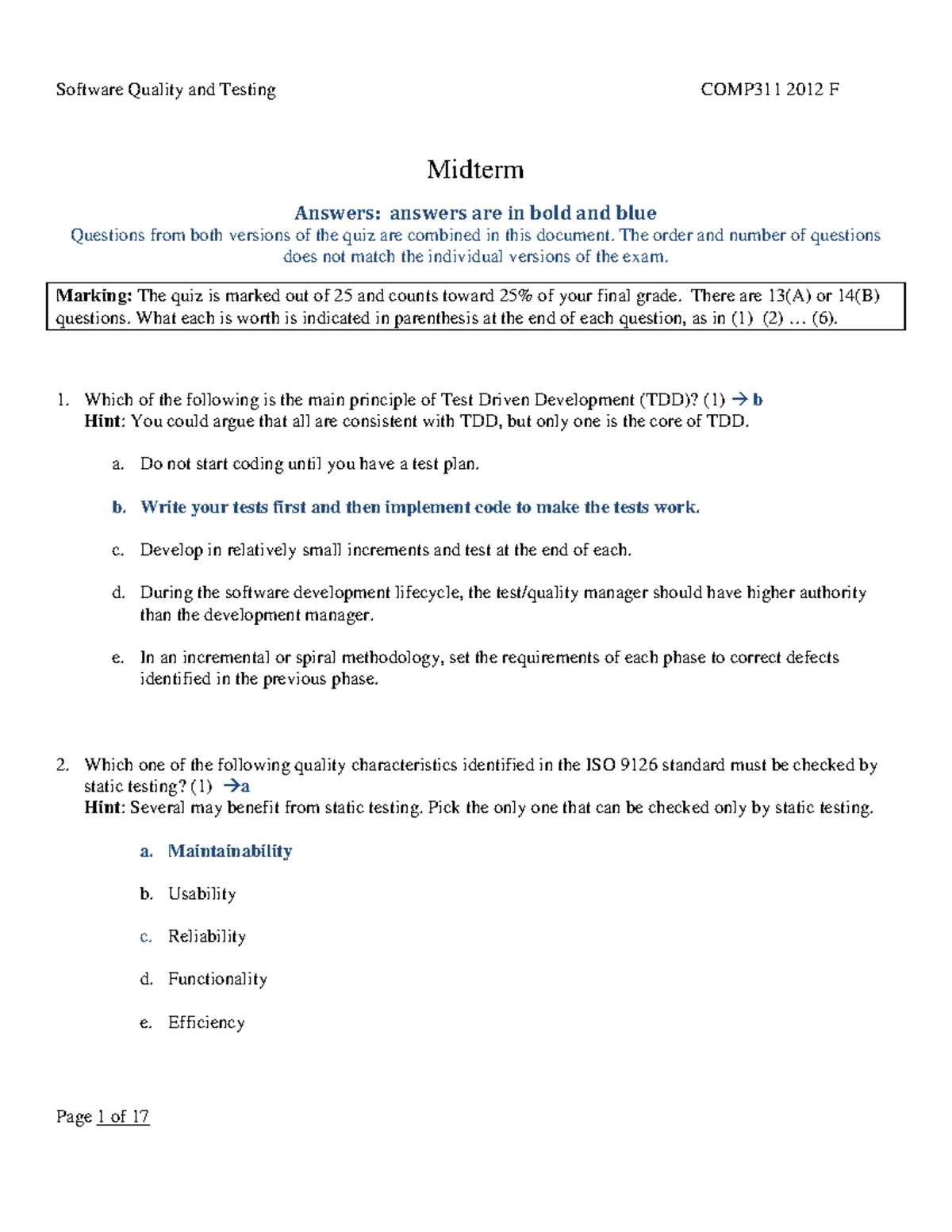
As testers gain experience, they are exposed to more complex scenarios and methodologies that require a deeper understanding and specialized skills. For those looking to elevate their testing practice, diving into advanced concepts and approaches can significantly enhance their proficiency. This section focuses on topics that experienced professionals can explore to stay at the forefront of the field.
1. Test Automation Frameworks
For seasoned testers, automating repetitive tasks can drastically improve efficiency and accuracy. However, it’s important to go beyond simple scripts and dive into frameworks that structure automation efforts. Understanding various test automation frameworks, such as:
- Keyword-driven frameworks: Use predefined keywords to perform actions.
- Data-driven frameworks: Focus on using external data sources to execute tests with varying inputs.
- Behavior-driven development (BDD): Integrates testing with development, emphasizing collaboration between technical and non-technical teams.
Mastering these frameworks allows testers to scale their efforts and achieve faster, more reliable results in testing large systems.
2. Continuous Integration and Continuous Testing
Experienced testers should be well-versed in integrating their testing process into the development lifecycle. Continuous integration (CI) ensures that new code changes are automatically tested in real-time, and continuous testing helps maintain quality throughout the development process. This practice involves:
- Automating the build and deployment process: Ensure every update is tested without manual intervention.
- Testing early and often: Integrating tests at every stage of development helps identify issues quickly.
- Feedback loops: A quick and efficient feedback mechanism enables the team to make adjustments before issues snowball.
By mastering continuous integration and testing, experienced professionals contribute to a faster development cycle with fewer defects reaching production.
These advanced topics highlight areas where experienced testers can refine their skills and lead their teams in the ever-evolving field of testing. Understanding and applying these strategies can enhance both individual and team performance, making testers more effective in handling complex challenges.